No matter what industry or niche you’re in, a podcast can provide extra value to your blog audience and help you reach new people. With 55% of the US population listening to podcasts in 2020 (up from 51% in 2019), there’s a huge opportunity for you to use this medium to grow your audience.
The best part? It’s easier to start a podcast than you might expect! Here are some tips that will help you grow your blog’s audience with podcasting.
Strategies for Podcast Creation and Audience Growth
The first thing you need to think about when starting a podcast is the topic. This will, of course, be related to your blog — but if you’re in a competitive arena, you might find more success slotting yourself into a relevant niche. Take nutrition blogger Madeline Shaw: Her podcast focuses on wellness tips to help mums get their glow back.
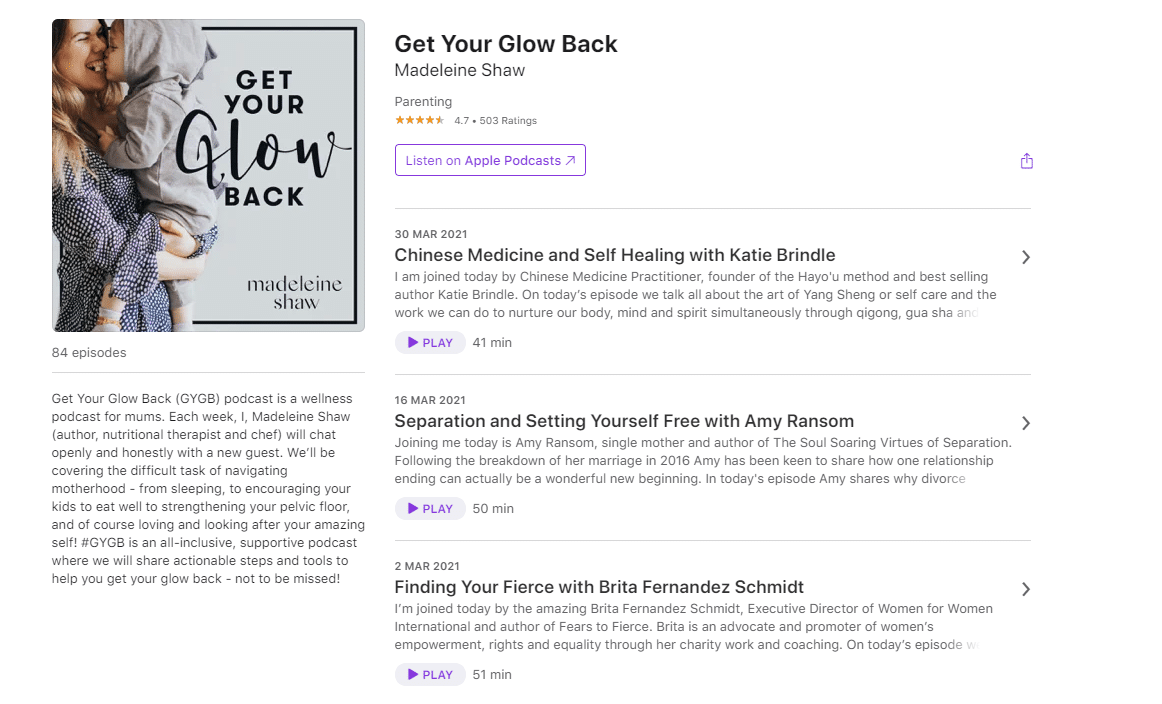
Niche is an important consideration and no doubt something that’s already played a large role in building your blog. If you already have an established audience, even a small one, speak to them about what they’d like to hear about in a podcast.
If relevant, pay particular attention to the challenges they face. People want to read and listen to content that helps them, so if you can define this early on, it’ll be much easier to develop and grow. Have a listen to what’s already out there, and find your own topic. As an example, you can take into account the blog of MuchNeeded.
The best podcasts are ones with a clear niche and audience targeting that appeal to people with specific needs or challenges. Pat Flynn’s Smart Passive Income podcast, for example, appeals to those people who are looking for a very specific type of business advice, while The Diversity Gap podcast focuses on helping listeners convert good intentions into practical changes.
Producing Your Podcast
When you first start your podcast, it’s wise to keep things as simple as possible. A decent podcasting microphone is all you need to begin, and a free audio app such as Audacity makes recording and editing easy. If you want as low a barrier to entry as possible, don’t go too heavy on your edit. Many podcasters edit out their “ums” and “ahs” but it’s not necessary.
How you edit depends on the style of podcast you want to create. If you want something very polished, you’ll need to get your head around editing (it’s fairly straightforward, but you could always hire a freelance editor if you’re pushed for time — or skill!). If you’re going for a more conversational tone and can record something in one take, this will reduce your editing time significantly.

Listen to other podcasts to get an idea of the format that will work well for you. Most podcasts will start with an intro, often with music. It’s important that you find royalty-free music for this — there are a number of free libraries out there, but you can also pay for music through a site like Epidemic Sound if you’re looking for something unique.
Ultimately, the style is completely up to you. There are a few tried and tested formats (conversational style, reportage, interviews, and so on), but this is your podcast, and you can experiment with what works for you and your audience.
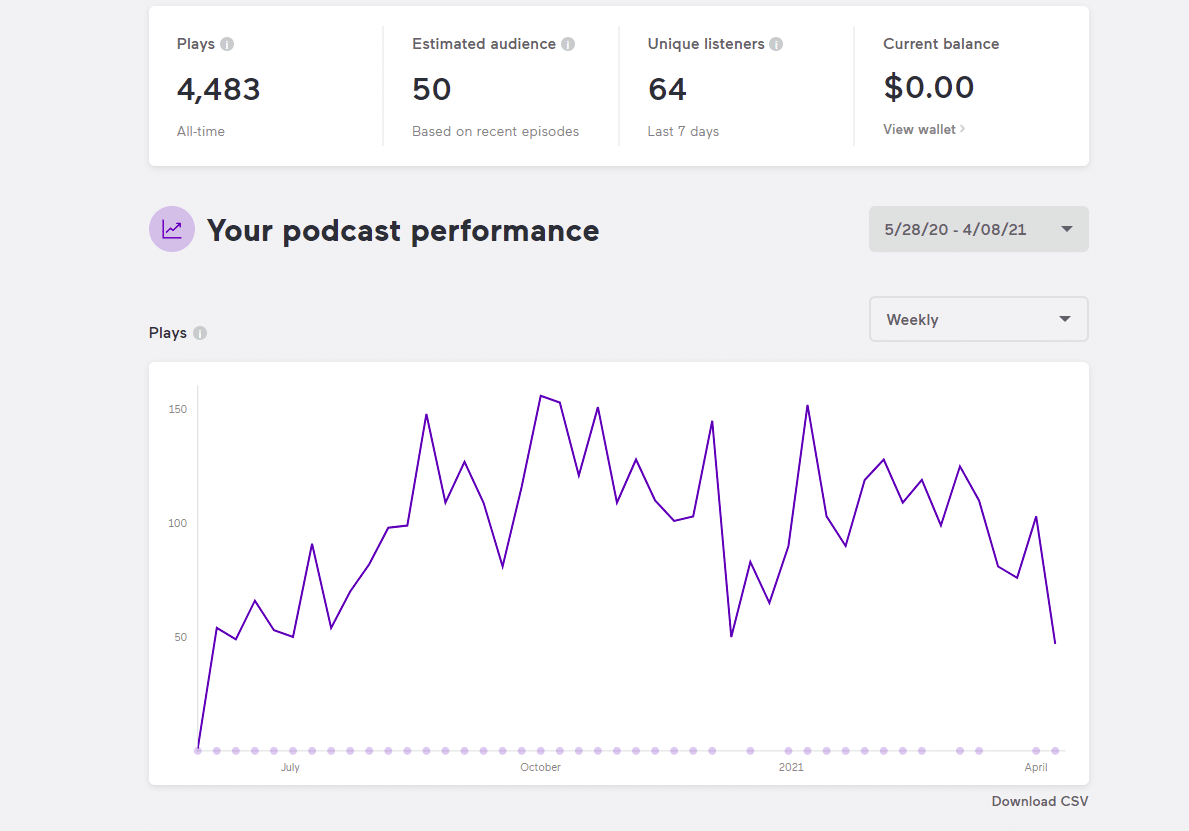
Publishing your podcast is as simple as uploading to a podcasting platform, which will then distribute it to the likes of Apple Podcasts and Spotify. There are free ones such as BuzzSprout, Spreaker, and Anchor.fm, but paid platforms tend to have more features.
It’s possible to record and produce a podcast on your own (and most people start out this way), but there’s always the option to hire a producer later on. This isn’t necessary at the beginning because consistency is more important than perfection when you’re just starting out.
Regular uploads might be the best way to build an audience through your podcast, but there are some ways you can stack the deck in your favor when it comes to launching, too.
Pre-launch
The pre-launch phase should start to get your existing blog audience excited about the podcast. This is your chance to not only generate some buzz but also get valuable feedback before you publish your first episode.
Start simple by posting on your blog and across social media about your podcast plans.
Get your audience involved by asking them to help you choose your podcast cover art or make suggestions on episode topics. Even if you’ve already made these decisions, asking your followers builds excitement about what’s to come. It helps your audience feel invested in your podcast’s success.
Launch
Your pre-launch phase should create some buzz about your podcast, but you can kick it up a notch as you get closer to launch day. Use a countdown on your blog and socials, share snippets from upcoming episodes, and run a competition that’ll help put you in front of more people.
It’s worth having a few episodes already recorded and scheduled when you launch, as this allows you to focus on marketing during this critical period.
Creating a Content Calendar
Just as you might with your blog, creating a content calendar helps you keep track of podcast episodes and ideas. The cadence of publishing is up to you but once a week is a good starting point.
A good rule of thumb is that the more often you post, the shorter each episode should be. For example, if you upload daily, keep episodes under 15 minutes to make them easily digestible. Weekly has the most flexibility, but each episode should be no more than 60 minutes. If you intend to upload once a month, you can get away with a slightly longer runtime, but an hour is a good upper limit for most people.
Start by brainstorming ideas for your podcast, and even look at your most popular content to get an idea of what episodes might do well. It’s worth planning well into the future as this will make it easier when you sit down to record.
Ongoing Growth of Your Blog and Podcast Audience
Once you’ve launched, it’s time to think about how to bring new people to your content and grow both your podcast and blog audience.
Cross-post With Show Notes
First up, you should cross-post between your podcast and blog. For most people, this takes the form of show notes. This is where you include all the links and important information from an episode. By doing this, you can direct listeners to your blog, where they’ll be able to find resources, recommendations, and, of course, other blog posts.

Amy Porterfield does this well. Her show notes include the embedded podcast, allowing readers to become listeners with zero effort. Each set of notes provides value with clear timestamps of what to expect in the episode.

At the bottom of her show notes, she also includes links and other ways to enjoy the post. This gets listeners interacting in different ways with each episode.
In your podcast, you might talk about something you covered in a previous blog post or create a list of further reading in your show notes. This is a great chance to reference your blog and encourage listeners to visit.
Encouraging Interaction
Your podcast can help you engage with your audience and allows them to get to know you. A Q&A is an easy way to encourage this interaction. You can use the questions sticker on Instagram Stories to create a simple platform for your audience to ask questions. You can make it clear that you’ll be answering them on an upcoming podcast episode.
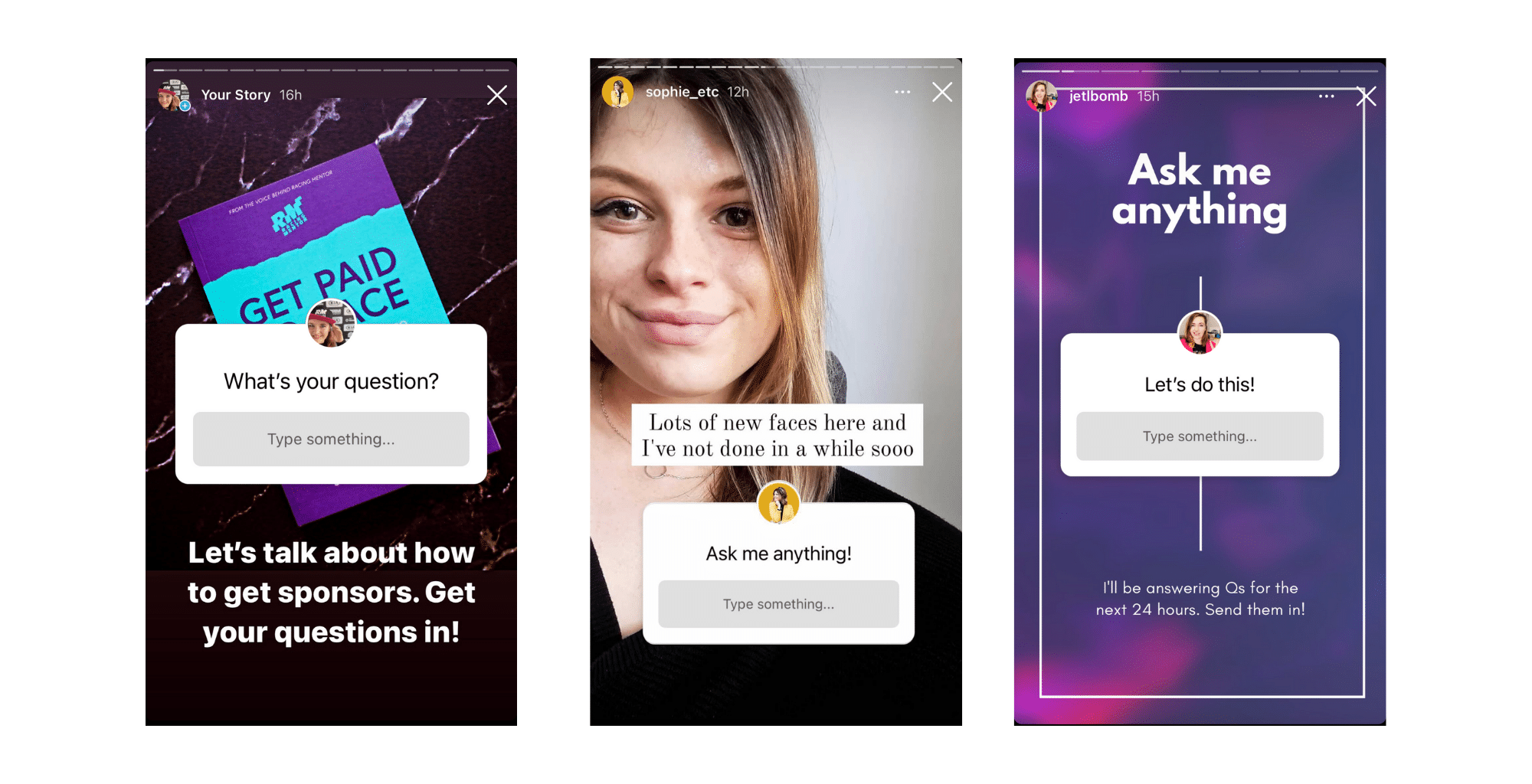
You can also create Q&A episodes specific to a certain topic — like Gary Vaynerchuck, who repurposes content like a master.
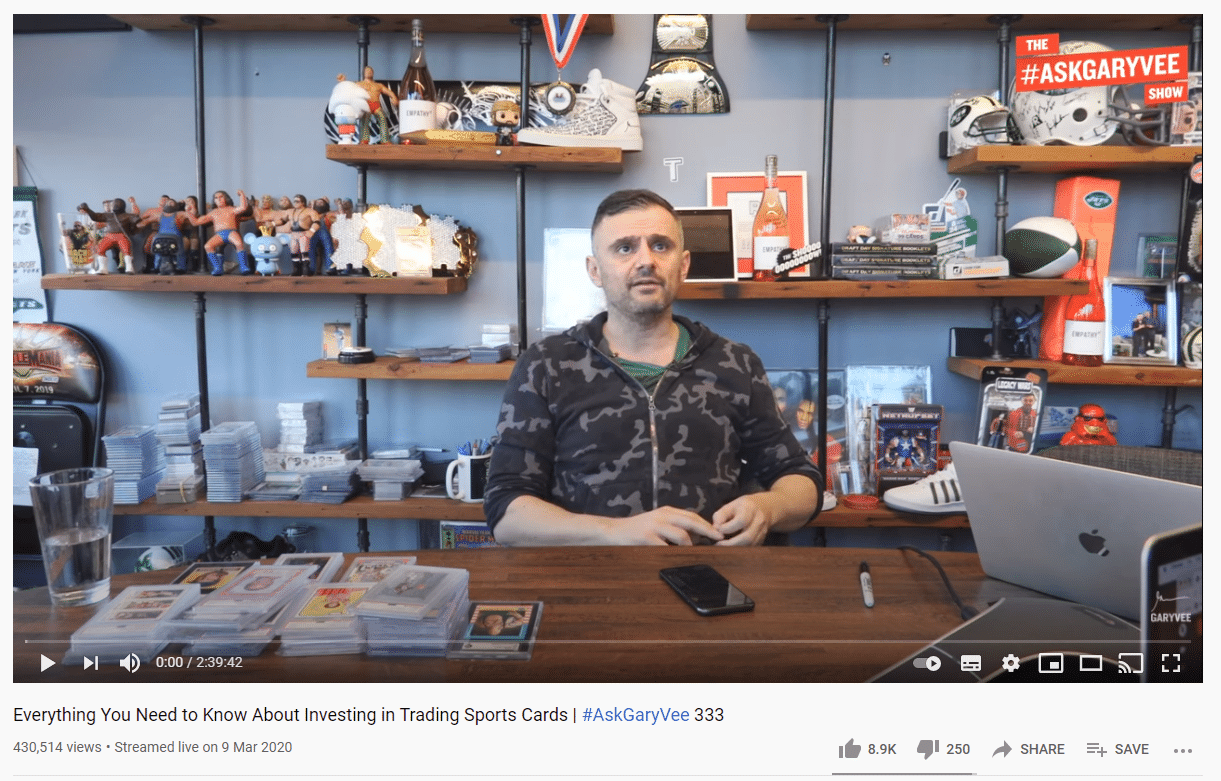
In one podcast episode, he talks about a very niche topic, sports cards. This is relevant to his audience but allows him to dig deep into something specific. Rather than collecting offline questions from his audience, he took questions live on YouTube. That content was then used across his channels as part of the #AskGaryVee series.
Q&As are a great place to start in encouraging interaction — but you can think of other ways to get your audience involved. A Facebook community group, for example, could increase interaction and give you a closed platform on which to interact with your audience.
Repurposing Content from Your Blog
Gary Vaynerchuck is a great example of someone who repurposes content, but you’ll see this across blogs and podcasts in all different genres, too.
Start by thinking about what will work for your ideal audience. If they don’t use Twitter, they’re not likely to engage with a Twitter thread that covers the main points of a podcast episode, for example. Are your readers and listeners spending time on Instagram? Do they look for expertise on LinkedIn? Do they love interacting with others on Facebook?
Once you know where your ideal audience hangs out, start repurposing your podcast content for them. You can make this easy on yourself by using a transcription service such as Otter.ai to turn your audio into text.
You could also create graphics to present the points in an eye-catching way. The more content you’re producing on a consistent schedule, the more people you’ll reach. Here are some ideas for repurposing content:
- Film your podcast as you record, then upload it to YouTube.
- Turn video and audio content into short clips for social media consumption.
- Create graphics to use on social media that present the topic in a visual way. (Read about How to Tell Engaging Stories with Data Visualization)
- Create a blog post from your audio (beyond simple show notes) for a deep dive into the topic.
- Use Instagram Stories to present a few points from the episode and go into more detail on one of them in a video.
- Use polls on social media to gather audience opinions on something you mention in an episode.
- Summarize the topic in a LinkedIn post or Twitter thread.
- Ask your audience for their experiences on the same topic to generate some social media engagement.
Start simple and just mention your blog in your podcast; this will help drive traffic. To take this to the next level, think about your content plan and consider adding some creative content management into your strategy.
The Food Network does this well with its Food Network Obsessed podcast. It takes inspiration from recipes, guests, and other content that’s appeared on the wider network to create something new and relevant for the podcast that also feels familiar and on-brand.
It’s a great idea to repurpose old blog content into podcast episodes because you have tried and tested ideas that have already been enjoyed by your audience. When repurposing content, always give a new angle or some new information to keep it fresh. Taboola Newsroom gives editorial insights that can help you determine which posts are performing well, which correlated topics you could cover, and how to optimize the content.
Invite Guests Onto Your Podcast
Another growth strategy is to interview people on your podcast. A great example of this would be design podcast The Design Of Business | The Business Of Design With Jessica Helfand And Michael Bierut. Your guests should have some valuable insight for your audience, which boosts the quality of the podcast. There’s a secondary benefit: Guest speakers will often promote their episode on their channels, helping you reach their audience, too.
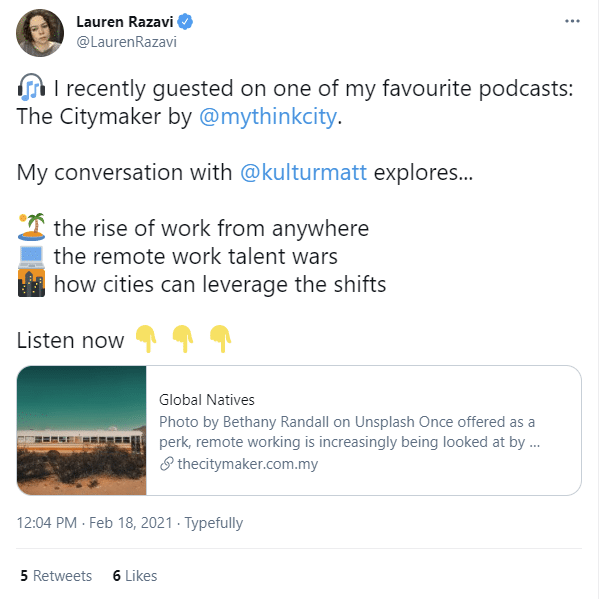
Here’s an example of future-of-work expert Lauren Razavi promoting her appearance on The Citymaker podcast.
Cover Trending Topics
If there’s something trending in the news that’s relevant to your niche, consider covering it in a podcast episode and blog post. People will search for trending topics, which will help you reach a whole host of new people. Need some inspiration? Here are some newsworthy podcast moments. You can also see a 360-degree view of topic trends on the web with Taboola Newsroom, where you can review what content your repeat visitors are reading.
How to Monetize a Podcast
Once your podcast has started to bring in new blog readers, you might be thinking about monetizing it. If you’re already working with advertisers on your blog, now would be a good time to reach out to them to see if they’d like to sponsor your podcast.
Finding new sponsors beyond your existing network can be tough, though, and you could spend a lot of time on sales for not much return. If you want to monetize your podcast quickly (and with less effort), consider signing up with an advertiser network. Taboola allows you to add sponsored content to your blog, giving you an easy way to monetize your show notes and related posts.

Another way to monetize your content is with products. For example, if you’re a fitness blogger, you might sell goal-setting or meal plan worksheets that you can promote in relevant blog posts and podcast episodes. Take a look at digital products in a niche similar to yours on a site like Gumroad for a little inspiration.

The next step would be to look at courses. If you’re teaching something through your content, this is a logical move, but it might be less clear if you create content that is designed to entertain. Take a look at a course directory such as Udemy to see what others bloggers/podcasters are doing. Think about what your audience needs and the challenges they face — this is often a good starting point for a course.
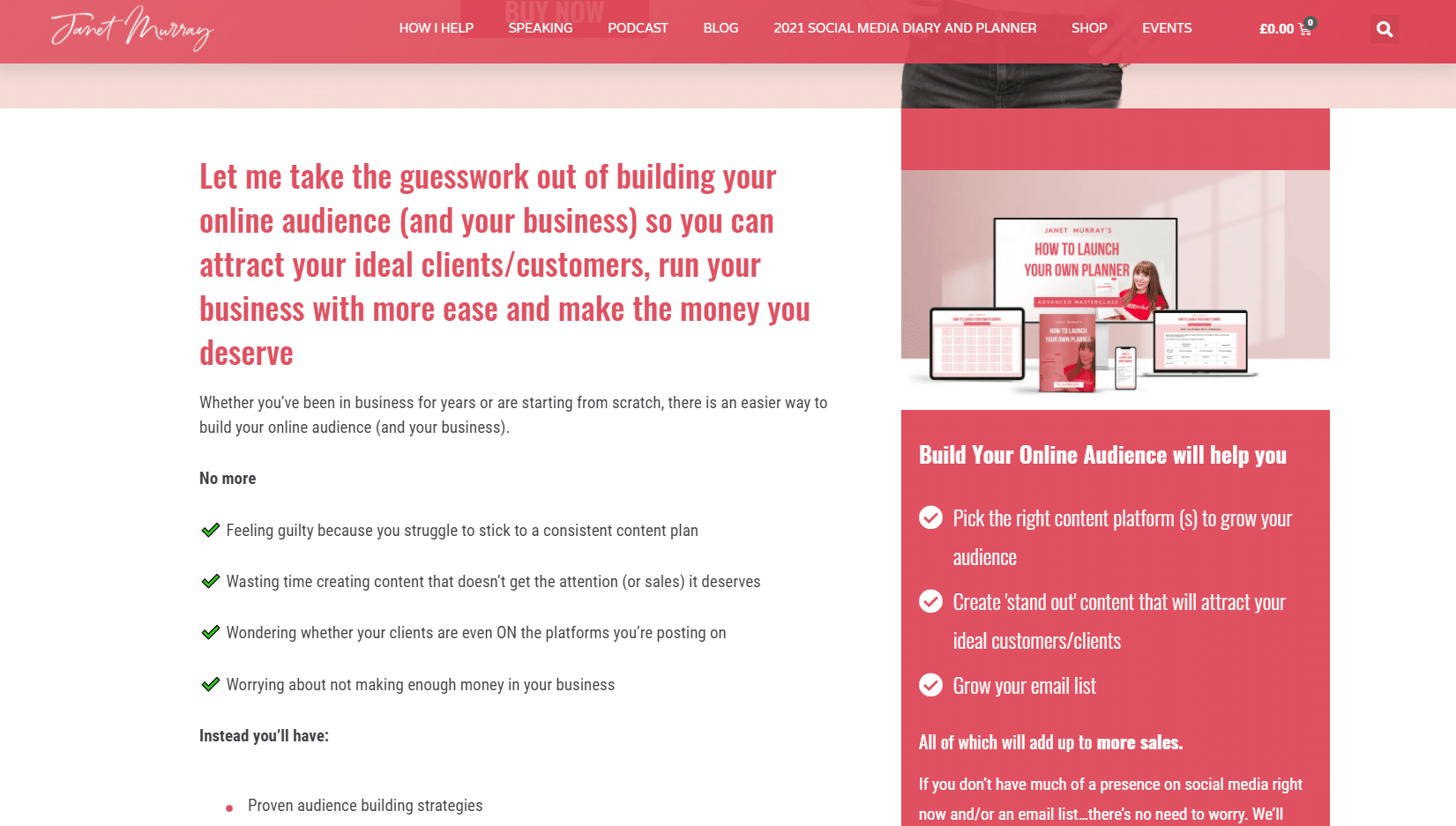
For example, Janet Murray is a podcaster who has done this well. She launched the Build Your Online Audience course off the back of her podcast and online community. Amy Porterfield, Pat Flynn, and ProBlogger have all had similar success with the courses they promote through their podcasts.
Share Your Content With Podcasts
A podcast not only helps your audience feel a connection to you, but audio is also a really accessible way for them to consume your content. With so many people listening to podcasts — 16 million people in the US consider themselves “avid podcast fans”— now is a fantastic time to use podcasts to build your blog’s audience.
If you’re looking for smart audience targeting to help you grow your blog and podcast or want to monetize your posts, take a look at Taboola’s tools and services for publishers.